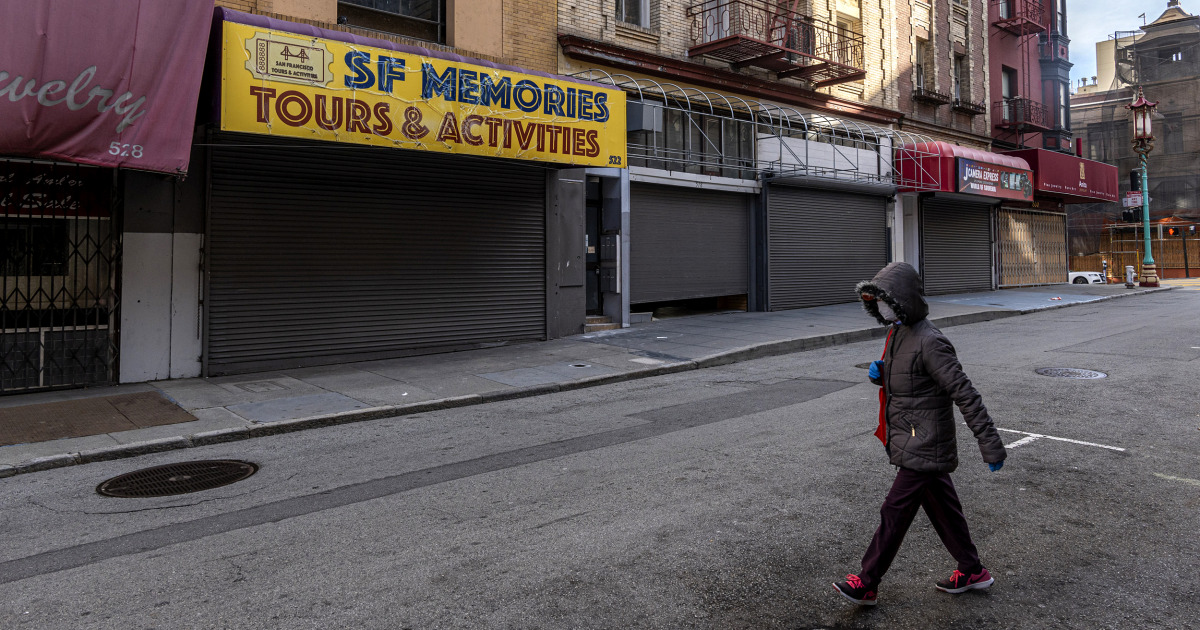The economy shed 140,000 jobs in December, a clear indication that the pandemic’s chokehold on economic activity strengthened in the final weeks of last year.
The unemployment rate held steady at 6.7 percent.
In the final jobs report of 2020, Friday’s monthly employment snapshot from the Bureau of Labor Statistics shows a labor market teetering on the brink at the end of a tumultuous year.
“The December employment report paints a wintry picture for the U.S. economy, including the first decline in hiring since last spring,” said Mark Hamrick, senior economic analyst at Bankrate. “Between the human and economic tolls taken by the pandemic, these are some of the darkest hours of this soon-to-be yearlong tragedy.”
Economists say the numbers lay bare the struggles facing American workers, and represent a mandate for President-elect Joe Biden’s administration to accomplish two things: Address the immediate financial needs of these households, and develop a longer-term solution that fosters job growth and protects the workers most vulnerable to disenfranchisement.
“It’s eerily reminiscent of when Joe Biden took office as vice president facing a significant jobs challenge,” said Andrew Stettner, a senior fellow at The Century Foundation. “I think they’re going to have a lot of urgency to do something early on.”
“These are some of the darkest hours of this soon-to-be yearlong tragedy.”
The government data comes just two days after a report by payroll processor ADP found that the private sector lost 123,000 jobs in December, the first decline since April.
A report from executive outplacement and coaching firm Challenger, Gray & Christmas found that planned job cuts rose nearly 20 percent in December on a monthly basis. The roughly 77,000 jobs companies announced plans to shed is 135 percent higher than a year ago.
Economists had predicted that worsening Covid-19 infection rates in the winter months could damage economic recovery, even as the promise of a vaccine has spurred hope on Wall Street and propelled the stock market to record highs. President Donald Trump has treated the stock market as a barometer of his term and a proxy for success. Observers predict that Biden will view the nation’s economic health through a markedly different lens.
“I think the Biden administration will prioritize the labor market and I think they have a partner in Congress now that has the same priority,” Stettner said.
A Democratic White House and Congress makes the prospect of more generous stimulus legislation all but certain. Even after the stimulus package the lame-duck Congress completed at the end of the year, there is still broad agreement on the need for further fiscal support, said Mark Hamrick, senior economic analyst at Bankrate.
“The prescription has been fairly consistently enunciated from the business community, as well as our central bankers, because they understand there’s only so much of a fulcrum they can lean on with monetary policy,” Hamrick said.
One obvious entry point with the potential to draw bipartisan support is infrastructure investment, since years of kicking the can down the road have left roads, railways and bridges around the nation in need of repair. “Ironically, that was the promise President Trump came to Washington on,” Hamrick said.
Stettner said the administration will need to address the significant racial and gender disparities in the labor market’s halting recovery. “As things began to open up, it really was white workers who were able to get back to work at a faster clip,” he said.
The ADP report showed that contraction in leisure and hospitality businesses dominated December’s slide, accounting for roughly half of the job losses for the month. This has a disproportionate impact on Americans who are already among the most marginalized populations, Stettner said. “The service sector where women of color get most of their work has been most affected,” he said. A lack of child care, he added, has driven women out of the workforce more broadly, as they take on the bulk of that additional, unpaid labor.
The specific nature of the pandemic’s labor market distortions obscures the picture of exactly how dire circumstances have become in those sectors, said Ludovic Subran, chief economist at Allianz SE.
“The issue is it really hides the drop in active populations of people [who] have stopped looking for a job, because they know in their sector there might not be any jobs,” he said. While the BLS data does include alternate measures of under- and unemployment, Subran said these metrics fail to capture the extent to which the pandemic has annihilated entire industries.
He urged the Biden administration to consider “opening the box” and exploring direct, robust labor market interventions such as federal training and reskilling initiatives that have been deployed in Europe but never caught on amidst the fraying of America’s social safety net.
“You need to bring some of the people that used to work in the service industry into other sectors,” Subran said. “I would advocate for a Democratic administration to really go ‘Marshall Plan’ on learning, upskilling, intermediation, requalification,” he said.























